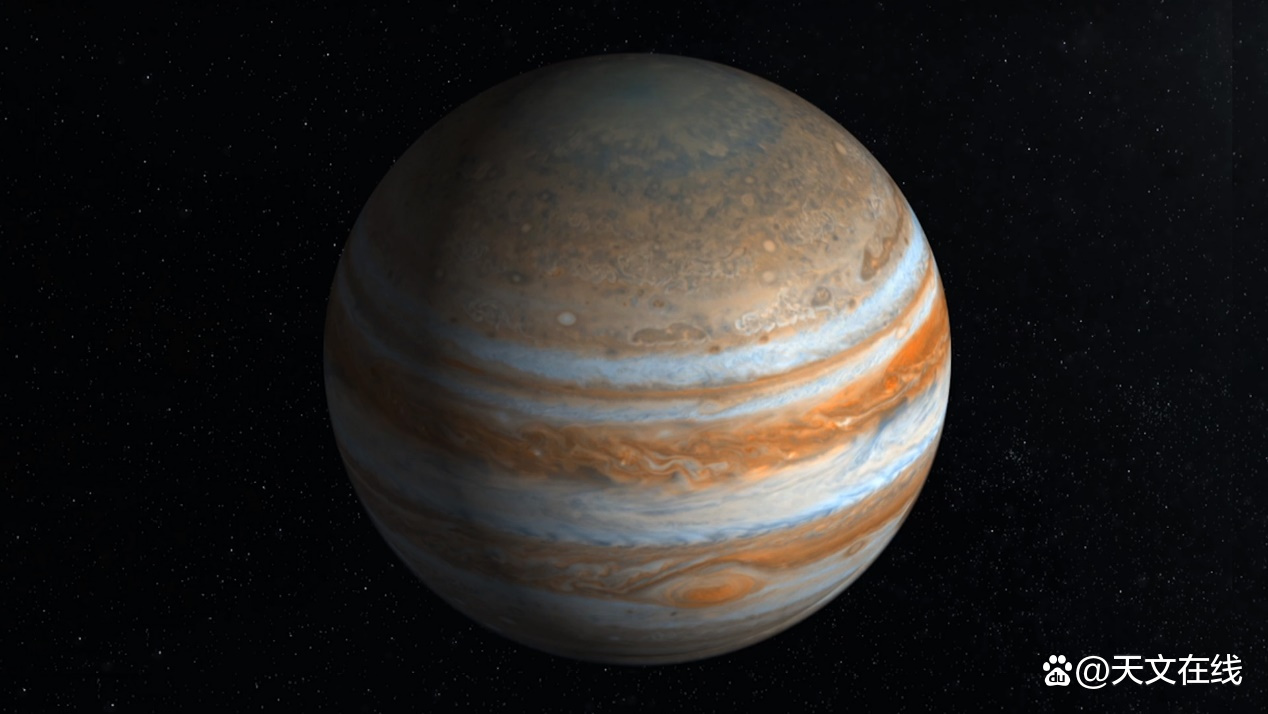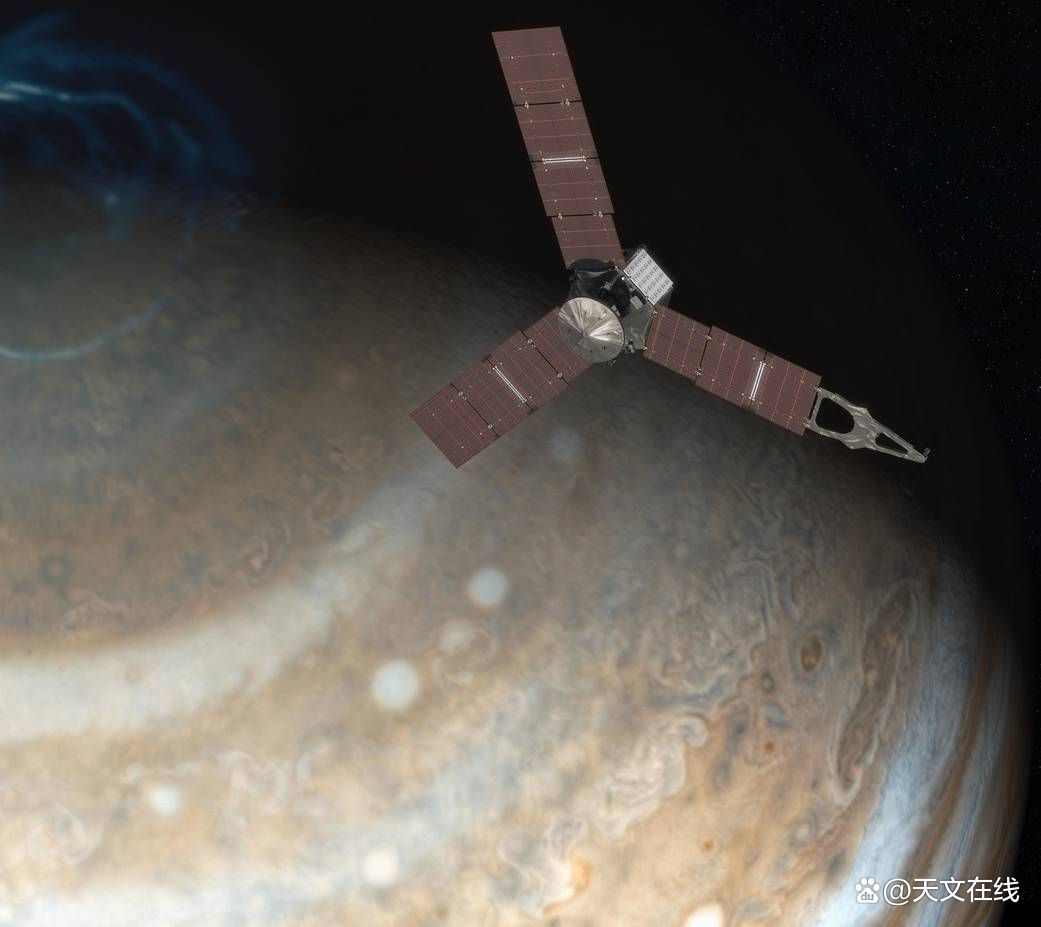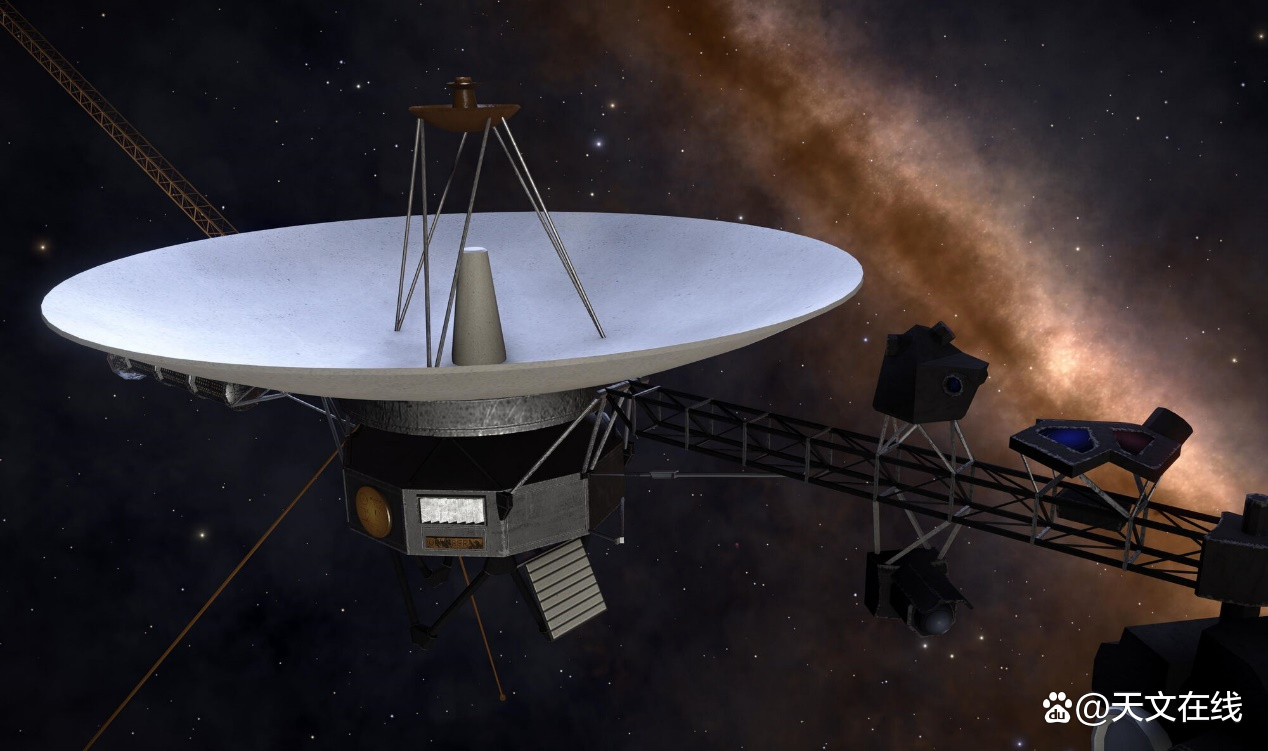No ammonia, really?Astronomers reveal the mystery of the atmosphere of the King of Heaven and Neptune
Author:Astronomy online Time:2022.08.08
The stinky "paste" hail on the king star may explain the atmospheric abnormalities on the planet (and Neptune)
There are no full reasons why ammonia does not appear on the King of Heaven and Neptune.

The artist's depiction of the decrease of paste in a huge planet atmosphere. (Picture source: NASA/Jet Promotion Laboratory-California Institute of Technology/SWRI/CNRS)
Recently, the huge hail rich hail richly found on Jupiter- "paste" may explain why heaven and Neptune seem to have no ammonia in the atmosphere of Heaven and Neptune.

(Jupiter, Picture Source: Network)

(Uranus, Earth, Neptune, Picture Source: Network)
Over the years, scientists have been confused without ammonia in the atmosphere of Uranus and Neptune.
Ammonia is famous for its unpleasant smell and is common in the universe. Because the atmosphere of Uranus and Neptune is rich in other compounds, these compounds exist in the primitive clouds when the planet forms, and it is difficult for scientists to explain why ammonia does not exist in this behemoth.
However, the hail -rich hail that is recently found on Jupiter may explain this mystery. Spoiler warning: Perhaps it is not completely without ammonia -ammonia may exist in deeper planet atmosphere, and the current scientific instruments cannot be reached.
The key to solving the mystery may be the Juno of NASA, and is currently performing tasks on Jupiter's orbit.

(Juno, picture source: network)
"Juno's spacecraft shows that a large number of ammonia exists in Jupiter, but (in the atmosphere) is much deeper than expected." Trelistan Gino, a researcher at the French National Science Research Center (CNRS) Speaking.
A study published last year in the magazine of Nature found that during thunderstorms, ammonia -containing balls were high in Jupiter's atmosphere. This is because ammonia can melt ice into liquid water even at a very low temperature of the Hualhi (minus 90 degrees Celsius) below 162.
These pastes fall in the atmosphere, absorb more and more ammonia, and eventually reach the quality of 2.2 pounds (1 kg). The ammonia was transported to the depths of the atmosphere blocked by the clouds.
"What we learned on Jupiter can be applied to the mystery of solving Uranus and Neptune." Gino introduced the theory at the 2021 European Planet Science Conference (EPSC). The meeting was held from September 13 this year to September 24.
"According to the theory of thermal chemistry, this process will be more obvious in the King of Heaven and Neptune, and the area where the ball began is expanded to a deeper place." Gino added.
This means that, just like the Jupiter, the ammonia on Neptune and Uranus is only hidden in the depths of the atmosphere. Scientists can only use infrared and radio signals on the earth's astronomical telescope to measure the atmospheric components on these remote planets.
So far, these two planets have only been patronized by a spacecraft, a traveler No. 2 of NASA, and probably. This is probably at the end of the 1980s.

(Traveler No. 2, Picture Source: Network)
Jino believes that the "guise" in these distant planet's atmosphere provides motivation for this research task, so that everyone wants to fully understand what is happening.
"To fully understand this process, we also need precision tasks to measure the structure of the atmosphere and understand the hydrogen atmosphere." Gilo said, "Uranus and Neptune are giant planets such as Jupiter and Saturn and we discovered by us in the Milky Way system. We really need to understand them! "

related information
Uranus is the seventh planet from the inside out of the solar system. Its volume ranks third in the solar system and ranks fourth in quality. Its English name Uranus comes from the god of ancient Greek mythology Uranos. He is the father of Klunos and the grandfather of Zeus. Compared with the five planets known in ancient times, the brightness of the King Star was also visible to the naked eye, but because of the more dim and slow winding speed, it was not identified as a planet by ancient observer.
By: Tereza Pultarova
Fy: full collection
If there is related content infringement, please contact the author to delete after the work is released
Reprinted, please obtain authorization, and pay attention to maintaining integrity and indicating the source
- END -
Liu Run Dialogue You Zan CEO Bai Raus: Customers, efficiency and elasticity are keywords for growth, and the changes in population structure brings new possibilities

Picture source: Oriental ICOn June 29, Youzan announced the important upgrade iter...
Kuaishou bring StreamLake and virtual anchor Guan Xiaofang at the 3rd China Short Video Conference

From August 9th to 11th, the third China short video conference was held in Fuzhou...